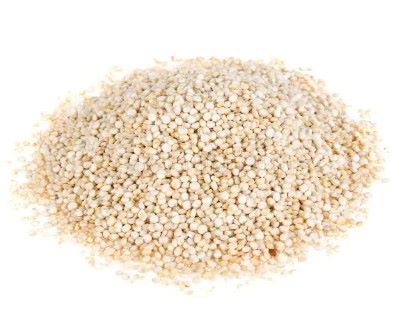

A dog with a quinoa allergy may show the following symptoms: itching, scratching, redness of the skin, hives, sneezing, coughing, difficulty breathing, vomiting, and diarrhea. They may also experience swelling of the face, limbs, and/or muzzle. In severe cases, anaphylactic shock can occur.
A quinoa allergy in dogs is caused by the body’s reaction to proteins in quinoa that it considers to be foreign. When the body senses the presence of these proteins, it will initiate an immune response to try and protect the body, resulting in the symptoms seen in the dog.
The diagnosis of a quinoa allergy affecting dogs is made through an examination of the dog’s physical symptoms and a possible skin or blood test. Symptoms can vary from mild itching to severe anaphylactic shock, depending on the dog’s specific reaction. The physical examination should help a veterinarian to rule out other causes of the symptoms and pinpoint a quinoa allergy. Once the allergy is confirmed, the veterinarian may recommend further testing such as a skin test or blood test to confirm the diagnosis.
A quinoa allergy is a serious allergy in dogs and can be life-threatening if untreated. Anaphylactic shock, if left untreated, can cause death within minutes. The mortality rate for quinoa allergies in dogs is low, but if left untreated it is estimated to be around 5-10%. It is important to speak with a vet and determine the best treatment plan for your dog if they have a quinoa allergy.
The treatment for a quinoa allergy affecting a dog will depend on the severity of the symptoms. Generally, an antihistamine medication may be prescribed to help reduce the symptoms, such as itching, scratching, and swelling. If anaphylactic shock occurs, emergency medical care should be sought out immediately. Additionally, long-term management of the allergy may involve dietary changes to limit or remove quinoa from the dog’s diet.
To prevent an allergic reaction in dogs with a quinoa allergy, owners should avoid giving quinoa or quinoa-containing products to their dogs. If the allergen is unavoidable, the owner should consult with their veterinarian and consider administering an antihistamine or other allergy drug prior to its exposure. Diet should be restricted to hypoallergenic foods and treats that are free of quinoa and its derivatives. In addition, owners should ensure their dog is groomed regularly to reduce allergen build-up on the fur. To reduce environmental allergens, owners should vacuum and dust regularly, use air purifiers, and avoid strong perfumes, carpets, or furniture that could exacerbate the allergies.
This dog allergy is not contagious and can not affect humans. However, if a person has a known quinoa allergy, they should take extra precautions when interacting with a dog that is known to have a quinoa allergy due to the potential of cross contamination with saliva and fur.
Home remedies that can be helpful in managing quinoa allergies in dogs include feeding them a hypoallergenic or home-cooked diet, avoiding the allergen as much as possible, and giving them antihistamines and fatty acids. Additionally, applying aloe vera gel or coconut oil directly to the affected area can help soothe itchiness and skin irritation.
While the above-mentioned home remedies can be helpful in managing quinoa allergies in dogs, it is important to note that these are not guaranteed solutions and it is best to consult with a veterinarian for a tailored, long-term treatment plan.
Dogs that are particularly vulnerable to quinoa allergies are Labrador Retrievers, Golden Retrievers, German Shepherds, and Cavalier King Charles Spaniels. These breeds tend to be more sensitive to the protein content found in quinoa than other breeds. Symptoms of a quinoa allergy can range from skin rashes and excessive scratching to vomiting, diarrhea, and difficulty breathing. If your dog does present these symptoms and you think it may be due to a quinoa allergy, contact your veterinarian for a diagnosis and potential treatments.
Have you ever had to deal with a dog with a quinoa allergy? If so, how did you respond? How did you feel, and what steps did you take to manage the ailment?
No matter the results of your experience, we hope that your loving companion is currently in good health and that you can take the steps necessary to ensure they stay happy and healthy moving forward.